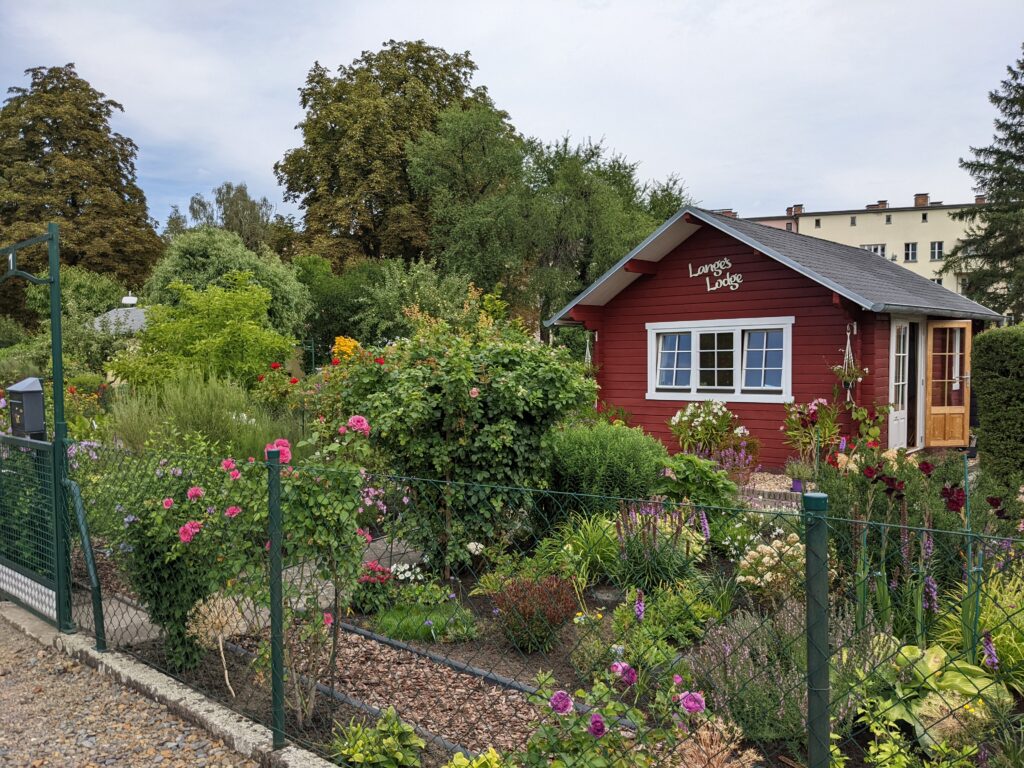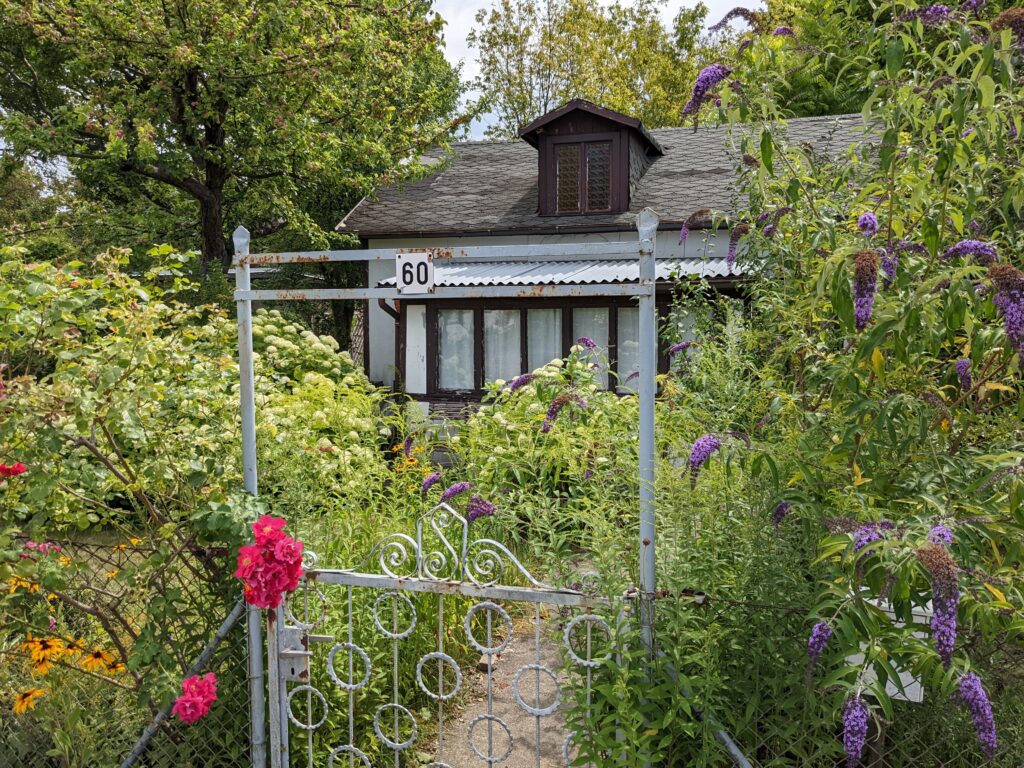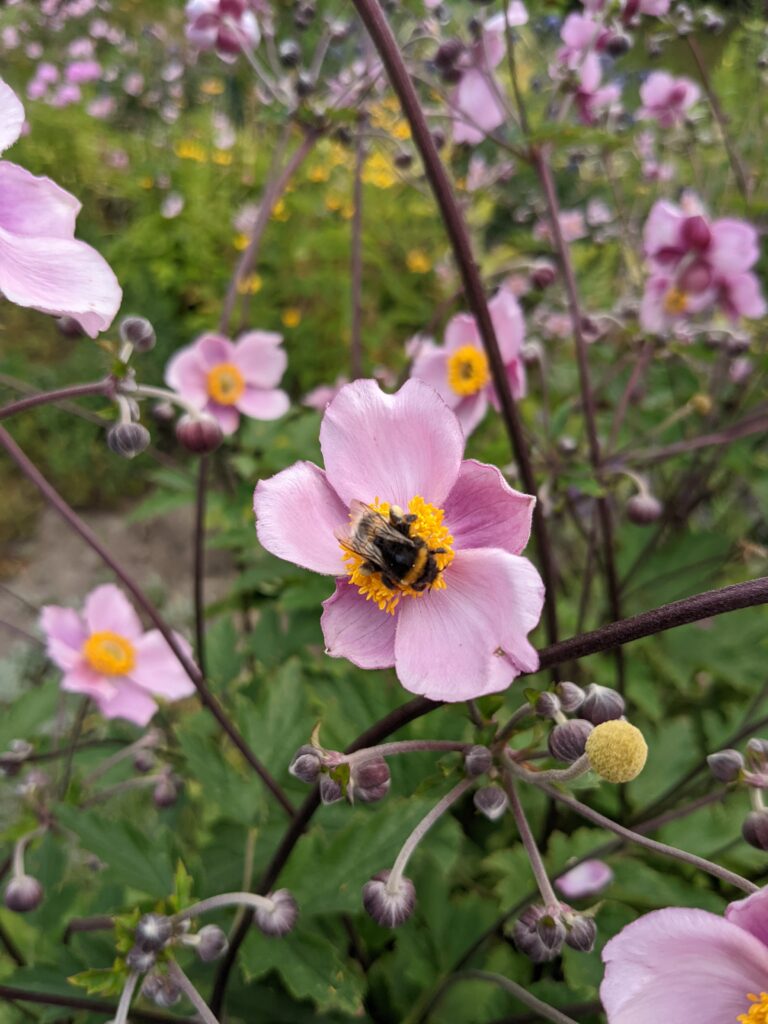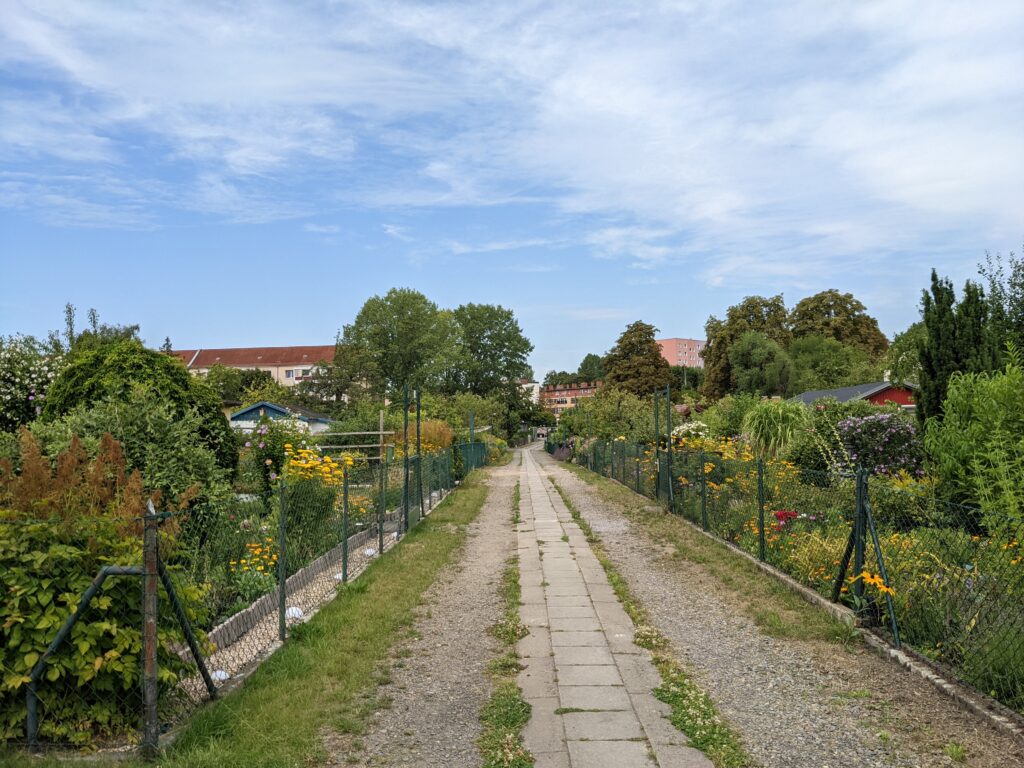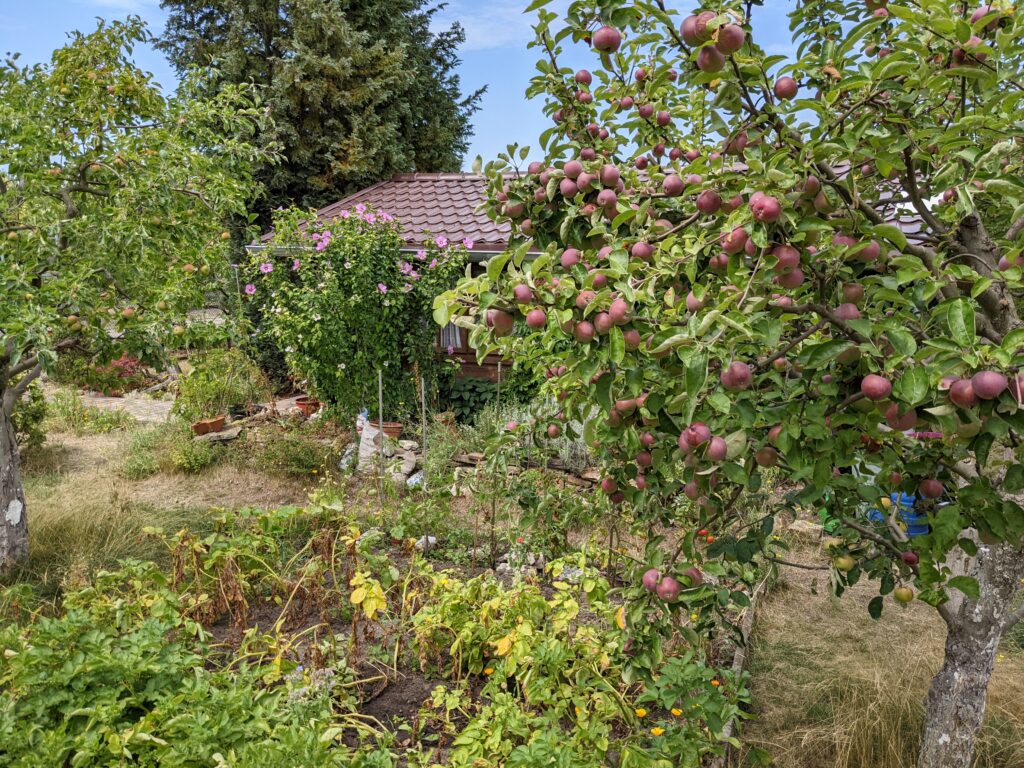This past summer I had the opportunity to spend several weeks visiting friends and familiar places in Germany. Having lived there for three years in my twenties, this visit provided a much-needed cure for my Wanderlust.
Turns out that when you wait so long to return to a favorite place, you see it with fresh eyes. In my twenties, I knew nothing about plants, ecosystems or public gardens. I didn’t observe my surroundings with an incessant need to identify the wildflowers growing on the hillsides or alongside the railroad tracks. It would never have occurred to me to wonder if the flowers planted in people’s gardens originated from local ecotype seed, or were imported from North America or Asia. And I was much more interested in etymology than entomology.
Though I have learned so very much in my time working at the Arboretum, I realized on this trip that I have so many questions regarding the world of plants and gardening, and I lean heavily on my colleagues for the answers. (Thank you, Scott, Brad, Katie and Lorna!) Nevertheless, I’d like to share with you some of the gardens that I saw this summer, and the questions they caused me to ask.

In this post, I’d like to tell you a little about the “Sonnenschein” Kleingartenanlage, a 96 year old community garden on the outskirts of eastern Berlin.
Kleingartenanlagen (Small Garden Allotments)
Founded in 1926, the “Sunshine” Garden includes 130 garden plots, averaging around 4,000 square feet, each equipped with electricity and water. A clubhouse and playground, added in the 1950s, sit at the center of the gardens. One edge of the gardens opens directly onto the Orankesee, a lake and nature reserve.
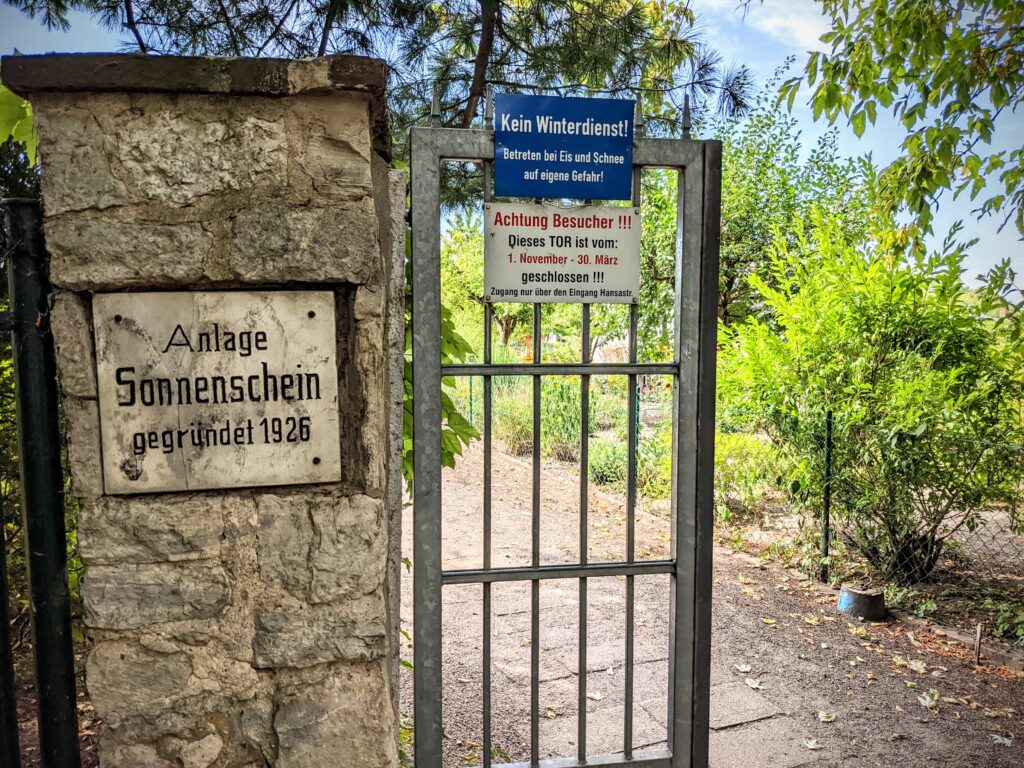
These types of community garden complexes became popular in Germany, as well as in other European countries, in the late 1800s. In former East Germany, they are called simply “Kleingartenanlagen”, or small garden allotments. In former West Germany, they are called “Schrebergaerten”, named after Moritz Schreber, a psychologist who, in the wake of the Industrial Revolution, encouraged parents to get children outside and into nature to improve their health. It is estimated that there are currently 1.5 million of these community gardens throughout Germany.
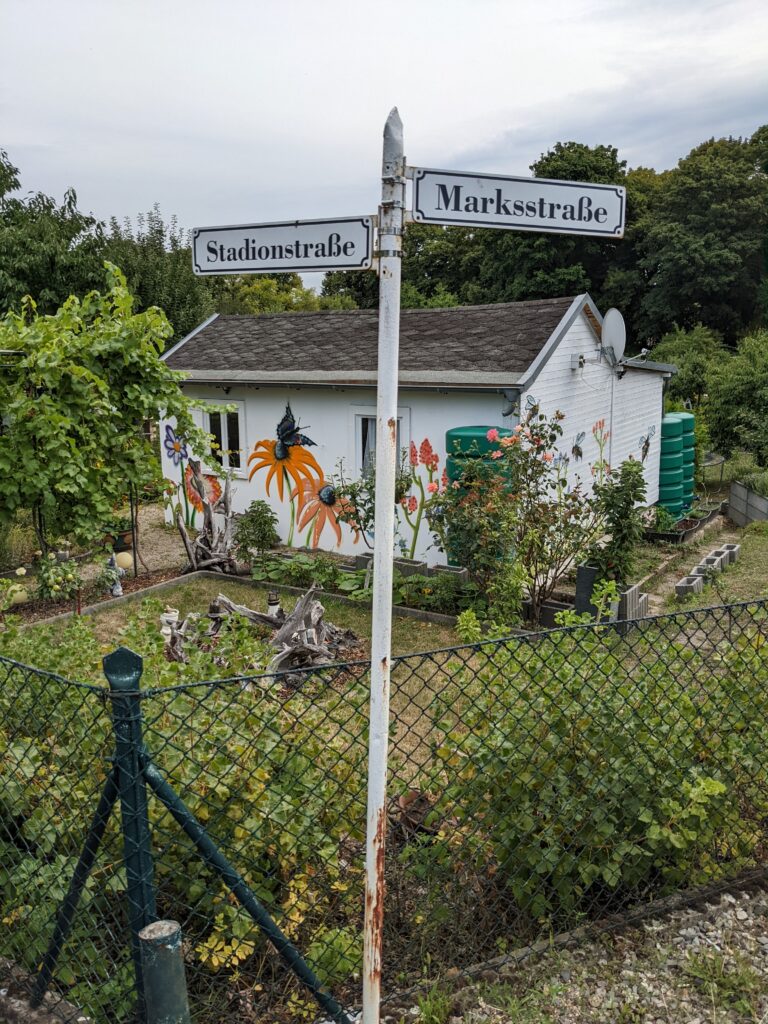
As I meandered through the streets of the gardens, I was struck by how much I take for granted – the access I have living here on the prairie to open, green spaces. During times of war, these garden plots often became a source of survival for city-dwelling families who otherwise had little access to fresh produce. In recent decades, it seems they have been viewed by some as being rather kitschy and old-fashioned, but in the aftermath of the pandemic-induced gardening revival, perhaps they will see a rise in popularity.
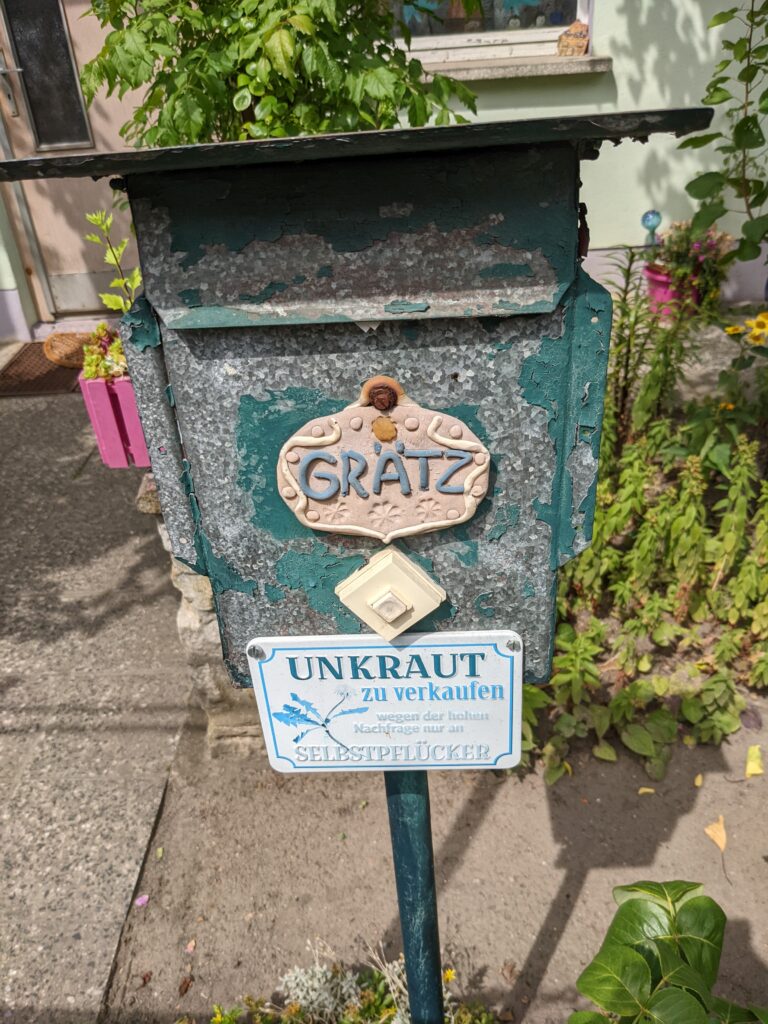
Oddly enough, I felt connected to these gardeners, having never met them. But in observing how they chose to tend their small gardens, how they expressed themselves through their land stewarding choices, it was like they were introducing themselves to me, gardener to gardener. And I was appreciative of their hospitality, toward me and toward the other creatures who visit their gardens.
I took many, many pictures that day, and so I’ll leave you with a few of my favorites. May they bring you a sense of connectedness, joy and gratitude, as they do for me. Happy gardening!
